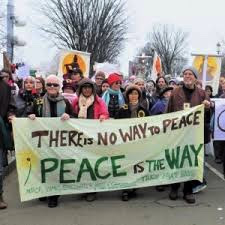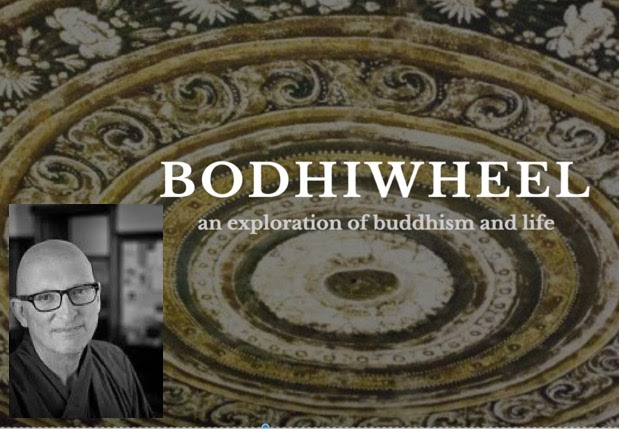This Monday night, Camille will facilitate. She shares:
Dear Friends,
For our gathering this evening, we will practice the 5 Earth Touching's (see full text below). Touching the Earth is a practice developed by Thich Nhat Hanh to help us connect with the many different aspects of who we are: our blood and spiritual families; the country we live in; and all beings- animals, plants and minerals. "When we are connected to our roots, to all that sustains us, we are happy and solid, no longer isolated and lonely. When we touch the Earth, we breathe in all the strength and stability of the Earth and breathe out our suffering" (Thich Nhat Hanh - from Plum Village web site).
When I read or practice the Earth touchings, I think of my parents, who are still living, and all my grandparents who I knew, and their parents who I have heard about - and I feel the love and support of all of them and it makes me feel happy. When family, friends, neighbors, and teachers share their spiritual traditions and rituals I find that I am drawn to all of them and get excited to learn from them. It is a gentle reminder that we all possess the energy to create peace, love, joy, kindness and understanding.
The Earth Touching practice will involve bowing down or prostrating to the Earth, if this does not physically work for you - please honor your bodies and allow yourselves to be in a comfortable position - whatever that may be.
After this practice I invite you to think about how this affected you and how you might even consider writing your own text to go deeper into the practice.
Looking forward to being with you.
Peace, Camille
--------------------------------------------------------------------------------------------------------
The Five Touching's of the Earth
Modified from Plum Village Chanting Book 2002
- I -
In gratitude, I bow to my ancestors, my mother, my father and all generations of ancestors.
(Bell)
(All touch the earth)
I see my mother as a young woman, smiling, vibrant, alive, innocent, with so many ideas and plans for the future. I can feel her energy in me fully. I see my father as a young man, fresh, at ease, determined, engaged, wanting to contribute to the world. I can feel his energy in me. I feel their eyes looking out of my eyes now.
I see my grandmother and grandfather on my mother's side and how they worked to raise my own mother in the best way that they could, and my grandmother and grandfather on my father's side and all of the difficulties that they faced. And I see all of my ancestors streaming back in time, whether they lived on this same land or another land, and I know that they worked hard in their lives in order for me to live my life now. I feel their joys and their sorrows, their expectations, and hopes, which have been passed down to me, in my very bones.
I carry in me the life,blood, experience, wisdom, happiness, and sorrow of all of these previous generations. I open my heart, flesh, and bones to receive the energy of insight, love, and experience transmitted to me by all my ancestors. The suffering and all the elements that need to be transformed, I am practicing to transform. I see all of their beautiful intentions and I feel love, compassion and sorrow for their hurts. I pour out all of the negative habit energies and experiences I have received from my ancestors, into the support of Mother Earth beneath me, leaving only their inner goodness -- their Buddha nature -- in me.
I know that parents always love and support their children and grandchildren, although they are not always able to express it skillfully because of difficulties they themselves encountered. As a continuation of my ancestors, I bow deeply with gratitude for all that my parents, grandparents, and ancestors went through to provide me with life today. I open myself to allow their energy to flow through me and I ask them for their support, protection, and strength.
(Pause)
(Bell Tap)
(All stand up)
- 2 -
In gratitude, I bow to all of the beings who have supported me on my spiritual journey.
(Bell)
(All touch the earth)
I see in myself my teachers and friends, the ones who show me the way of love and understanding, the way to breathe, smile, forgive, and live deeply in the present moment. I see through my teachers all teachers over many generations and traditions, going back to the ones who began my spiritual family thousands of years ago.
I see the Buddha and the Bodhisattvas; Jesus and Mary; Moses and Abraham; Mohammed and the Sufi Masters; Krishna; Mother Earth and Father Sun, and the many wise and courageous women and men who have shown us the way. I see them all as my spiritual ancestors. Their energy has deeply transformed the world. Their energy has entered me and is creating peace, joy, understanding, and loving-kindness.
Without these spiritual ancestors, I would not know the way to practice to bring peace and happiness into my life and into the lives of my family and society. I open my heart and my body to receive the energy of understanding, loving-kindness, and protection from these awakened ones, and I send my deep gratitude to each and every one of them. Without them, I would not have the capacity to truly be there for my life and my loved ones.
I know that I am the continuation of their teachings, and of the community of practice over many generations. I ask these spiritual ancestors to transmit to me their infinite source of energy, peace, stability, understanding, and love. I will try my best to use this energy to practice so that I can transform suffering in myself and in the world, and to transmit their energy to future generations of practitioners.
(Pause)
(Bell Tap)
(All stand up)
- 3-
In gratitude, I bow to the Earth and all of the Beings who live on it with me.
(Bell)
(All touch the earth)
I see that I am whole, protected, and nourished by this Earth and by the living beings who have made life easy and possible for me through all their efforts. I see all those who have worked hard to build schools, hospitals, bridges, and roads, to protect human rights, to develop science and technology, and to fight for freedom and social justice, as well as those who have suffered as a result of being excluded from many of these institutions and the larger society.
I see myself touching all parts of this amazing planet - the blue sky and white clouds, the enormous beauty of the forests, the healing waters, and the solidity of the mountain ranges. I offer my intention to live in balance with all life on this Earth and I feel the energy of this land penetrating my body and soul, supporting and accepting me.
I vow to cultivate and maintain this energy and return it to support and protect the land, air, streams and oceans and animals. I will work to transmit this understanding to future generations. I vow to contribute my part in transforming the violence, hatred, ignorance and delusion that still lie deep in the collective consciousness of this society so that future generations will have more safety, joy, and peace. I ask this land for its protection and support and offer my gratitude for its wisdom, support, beauty, and for its infinite acceptance.
(Pause)
(Bell Tap)
(All stand up)
- 4-
In gratitude and compassion, I bow down and transmit my energy to those I love.
(Bell)
(All touch the earth)
All the energy I have received I now want to transmit to my father, my mother, everyone I love, and all who have suffered and worried because of me, and for me.
I know I have not always been mindful in my daily life, which may have caused my loved ones to suffer. I also know that those who love me have had their own difficulties. I see that they have suffered because they were not lucky enough to have an environment that encouraged their full development, and I feel compassion for their suffering. I transmit my energy to my beloved ones: my mother, my father, my brothers, my sisters, my husband, my partner, my wife, my daughter, my son; to the family of friends I have created around me; and to the husband, wife, partner, and children I may have in the future.
I transmit my energy so that their pain will be relieved, so they can smile and feel the joy of being alive. I want all of them to be healthy and joyful. I know that when they are happy, I will also be happy. I no longer feel resentment towards any of them. I ask my ancestors and spiritual teachers to focus their energies toward each of them, to protect and support them. I know that I am not separate from them. I am one with those I love.
I send my heart full of gratitude to those I love for their willingness hand-in-hand with me, even as imperfect as I am.
(Pause)
(Bell Tap)
(All stand up)
- 5-
In understanding and compassion, I bow down to reconcile myself with all those who have made me or those I love suffer.
(Bell)
(All touch the earth)
I open my heart and send forth my energy of love and understanding to everyone who has made me suffer, to those who may have destroyed much of my life and the lives of those I love.
I know now that these people have themselves undergone a lot of suffering and that their hearts are tight with pain, anger, hatred and delusion. I touch that pain and feel its sorrow and see that anyone who suffers that much will make those around him or her suffer. I know they may have been unlucky, never having the chance to be cared for and loved. Life and society have dealt them so many hardships. They have been wronged, abused and taught to hate. They have not been guided in the path of mindful living. They have been stripped of the innocence and joy of life. They have accumulated wrong perceptions about life, about me, and about us. They have hurt us and the people we love.
I ask my ancestors and spiritual teachers to channel to these persons who have made us suffer the energy of love and protection, so that their hearts will be able to open to receive love and blossom like a flower. I offer my deep wish that they can transform and experience the joy of living, so that they will not continue to make themselves and others suffer.
I see their suffering and do not want to hold any feelings of hatred or anger in myself toward them. I do not want them to suffer. I channel my energy of love and understanding to them and ask all my ancestors to help them to transform and to help me to forgive.
(Full Bell)
(All stand up)
(Bell to conclude the Touchings of the Earth.)
[This version of The Five Touching's of the Earth was adapted from the Plum Village Chanting and Recitation Book. Revised January 23, 2002, by the Still Water Mindfulness Practice Center and Annie Mahon, Opening Heart Mindfulness Community, November, 2015.]

























